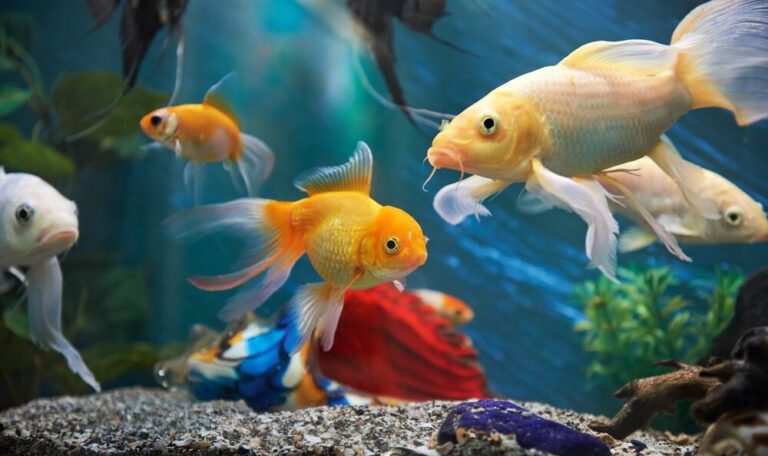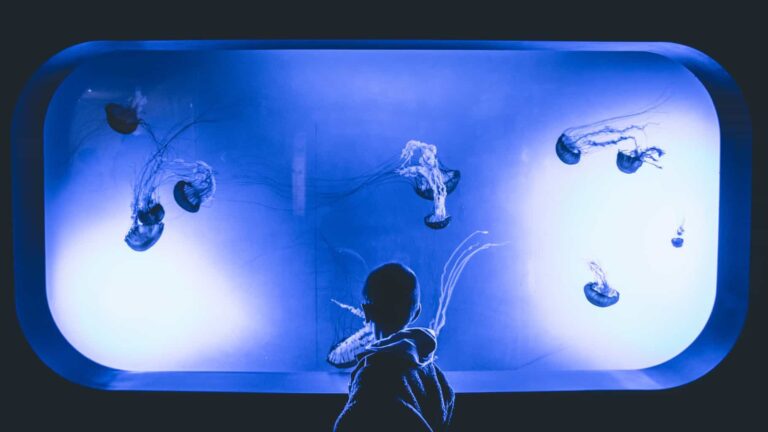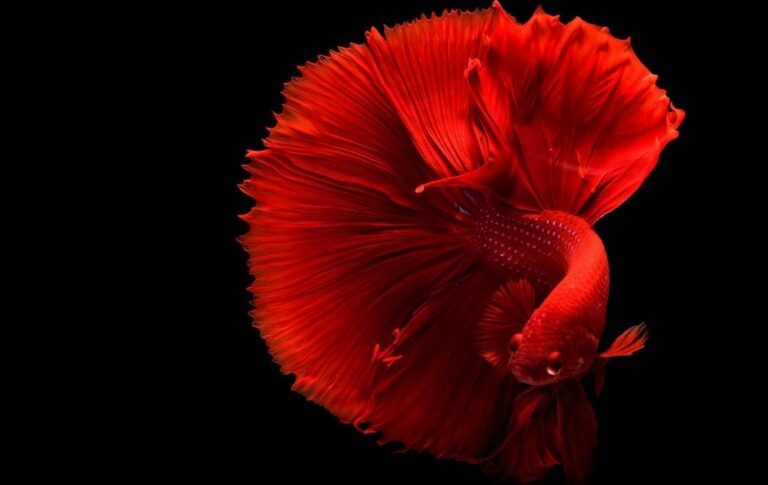While fish are the most common pet to keep in an aquarium, they are not the only option. Many non fish animals can be kept in an aquarium, each with their own unique characteristics and care requirements.
From invertebrates like snails and crabs to amphibians like frogs to small reptiles like turtles, there are a wide variety of non fish aquarium pets to choose from.
In this article, we will explore 5 non fish options available for aquarium enthusiasts and provide tips on properly caring for these unique and often overlooked pets.
1. Turtles

Turtles are popular for aquariums because they are relatively low-maintenance and can provide interesting visuals with their swimming and basking behavior. They come in various sizes and colors and can be aquatic or semi-aquatic.
Aquatic turtles require a large tank with a filtration system and a basking area where they can climb out of the water to dry off and regulate their body temperature. On the other hand, semi-aquatic turtles require a smaller tank with both water and land areas.
For both types of turtles, the tank should have a UVB light to help them synthesize vitamin D and a heat lamp to provide warmth. The water temperature should be between 75 and 80 degrees Fahrenheit, and the basking area should be between 85 and 90 degrees Fahrenheit. Clean the tank regularly and provide a varied diet of commercial turtle food and fresh fruits and vegetables.
Turtles can make interesting and unique pets, but choosing the right tank mates for them can be challenging. They can be aggressive and will often bully or attack smaller tank mates. Therefore, the tank mates should be similar or larger to your turtle. Avoid keeping territorial fish, such as cichlids, with your turtle.
Remember that turtles are carnivorous and will eat smaller fish and invertebrates. Also, choose tank mates with a different diet than your turtles, such as plant-eating fish or snails, to avoid competition for food.
Some suitable tank mates for turtles include larger fish, such as plecos and cory catfish, snails, and larger invertebrates, such as crayfish. You can also keep fancy goldfish with the turtle. It is also possible to keep turtles with other turtles as long as they have enough space and resources.
In captivity, turtles can be fed a diet that includes commercial turtle food and live or frozen foods, such as worms, insects, and small fish. Some vegetables, such as leafy greens, can also be offered as part of a balanced diet but should not be the main component.
2. Frogs

Some frog species, such as African dwarf frogs, can make interesting and low-maintenance pets for an aquarium. However, there are a few important considerations to keep in mind when keeping frogs in an aquarium.
First, choose the right species for your pet frogs. Not all frog species are suitable for life in an aquarium. It is important to research and choose a small, peaceful, and adaptable species in captivity. Some suitable species for aquariums include African dwarf frogs, banded bullfrogs, and budgett’s frogs.
Secondly, provide a suitable habitat. Frogs need a specific type of environment to thrive in captivity. The aquarium should be large enough to allow them to move freely and have plenty of hiding places, such as plants, caves, and rocks. A filtration system is also important to maintain good water quality.
Frogs are cold-blooded animals and rely on their environment to regulate their body temperature. The aquarium should be kept at a consistent temperature between 70 and 75 degrees Fahrenheit to keep your frogs healthy.
Keep the water clean. Frogs are sensitive to changes in water quality. So, it is important to perform regular water changes and maintain good water quality. This will help prevent illness and keep your frogs healthy.
Finally, provide a balanced diet. Frogs are carnivorous and will eat various live and frozen foods, including worms, insects, and small fish. You can occasionally offer frogs frozen fish foods such as fish flakes.
3. Snails
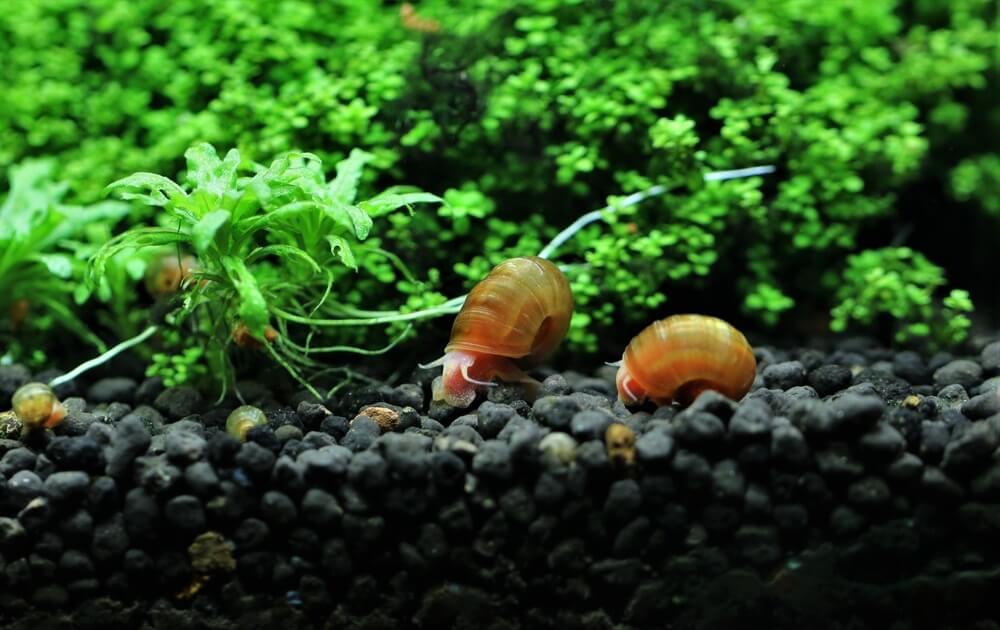
Snails can be a useful addition to an aquarium, as they help to clean the tank and control algae growth. They can help to keep the tank clean by eating algae and other debris.
Many different species of snails can be kept in an aquarium, including apple snails, nerite snails, and mystery snails.
Snails are generally peaceful and can be kept with other peaceful fish and invertebrates. They are omnivorous and will eat various foods, including algae, vegetables, and commercial snail food.
Provide them with plenty of hiding places, such as caves and plants, and perform regular water changes to maintain good water quality. Snails are sensitive to changes in water conditions, so it is important to slowly acclimate them to your aquarium by adding small amounts of water from the tank to their container every few minutes.
Snails can be kept in an aquarium with various fish and other aquatic animals. Some suitable tank mates for snails include peaceful fish species, such as tetras, danios, guppy fish, pearl gourami, and rasboras. Avoid keeping aggressive or territorial fish, such as African cichlids and betta fish (also known as Siamese fighting fish), with snails, as they may bully or attack the snails.
Snails can also be kept with other invertebrates, such as shrimp and crayfish. Avoid keeping invertebrates known as snail predators, such as certain fish species and amphibians. They can also be kept with other snails as long as they have enough space and resources.
4. Crabs
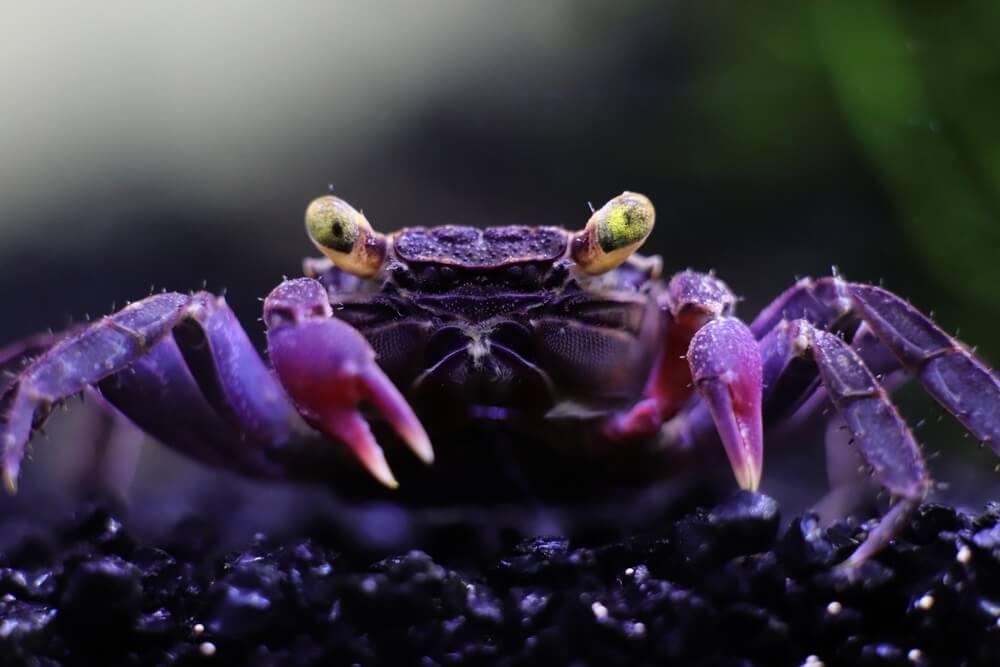
Crabs can make interesting and unique pets. They are known for their unique appearance and behavior. However, they have specific care requirements that need to be met to thrive in captivity.
The first crucial step is choosing the right species. Research and choose a species that is small, peaceful, and adaptable to life in captivity. Some suitable species for aquariums include red claw crabs, fiddler crabs, and hermit crabs.
Then provide a suitable habitat. Crabs need a large enough to allow them to move freely. The fish tank should also have plenty of hiding places, such as plants, caves, and rocks. A filtration system is also important to maintain good water quality. Crabs are sensitive to changes in water quality. They require regular water changes to prevent illness.
Maintain the right temperatures in the tank. Crabs are cold-blooded animals and rely on their environment to regulate their body temperature. The aquarium should be kept at a consistent temperature between 70 and 75 degrees Fahrenheit to keep your crabs healthy.
In terms of diet, crabs are omnivorous. They eat a variety of live and frozen foods, including worms, insects, and vegetables. Provide them with a balanced diet and avoid overfeeding them as this can lead to health problems.
Crabs can be kept with a variety of cold water fish and other aquatic animals in an aquarium. Some suitable tank mates for crabs include community fish, such as tetras, danios, and rasboras. Avoid keeping aggressive fish, such as cichlids, with crabs, as they may bully or attack the crabs.
Crabs can also be kept with other invertebrates, such as snails and shrimp. Or, you can keep crabs with other crabs as long as there is enough space and resources for all of them.
Research the specific needs and compatibility of any potential tank mates before adding them to your crab’s aquarium. This will ensure that everyone gets along and that your crab is happy and healthy.
5. Shrimp

Shrimps can make an interesting and colorful addition to an aquarium. Many species of shrimp can be kept in an aquarium, including cherry shrimp, ghost shrimp, and Amano shrimp.
Shrimp are generally peaceful and can be kept with other peaceful fish and invertebrates. They are omnivorous and will eat a variety of foods, including algae, vegetables, and commercial shrimp food. It is important to provide shrimp with plenty of hiding places, such as plants and caves, and to perform regular water changes to maintain good water quality.
Shrimp are sensitive to changes in water conditions, so it is important to slowly acclimate them to your aquarium. Shrimps can be kept with other invertebrates, such as snails and crabs or other shrimp, as long as there is enough space and resources for them.
Brine shrimp, also known as sea monkeys, can be kept in an aquarium. They are small, transparent crustaceans typically used as a food source for other aquatic animals.
However, they are not traditional pets like other fish and invertebrates and are not commonly kept in home aquariums. They require specific water conditions and are sensitive to changes in water quality, so they can be challenging to keep in an aquarium.
They require a specialized brine shrimp hatchery, where they can be easily raised and harvested as food. It is best to carefully research their care requirements and consult an experienced aquarist before trying to keep brine shrimp in an aquarium.
Conclusion
In conclusion, non fish aquarium pets can make for interesting and rewarding additions to your aquarium. While they may require a bit more care and attention than fish, these animals’ unique personalities and behaviors can add extra enjoyment to the hobby.
Before choosing a non fish aquarium pet, be sure to research the specific care requirements and ensure you can provide the necessary environment and resources for your new pet. With proper care and attention, these animals can thrive in an aquarium setting and provide years of enjoyment for their owners.
Whether you are an experienced aquarium enthusiast or new to the hobby, consider exploring the many non fish options available and bring some additional diversity to your underwater world.



